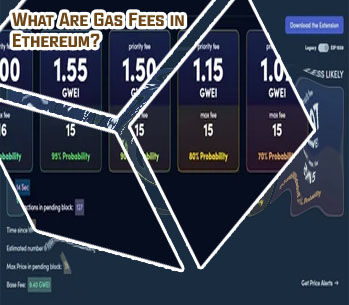Understanding Ethereum Gas Fees: A Complete Guide
Demystifying Ethereum Gas Fees: What You Need to Know

Ethereum gas fees have been a hot topic of discussion within the cryptocurrency community, with many users feeling confused and frustrated by the seemingly high costs associated with transactions on the network. In order to fully understand Ethereum gas fees, it is important to break down what they are and how they work.
Gas fees on the Ethereum network are essentially the cost required to perform a transaction or execute a smart contract. These fees are paid in Ether, the native cryptocurrency of the Ethereum network, and are used to compensate miners for including the transaction in a block and processing it on the network. The amount of gas required for a transaction is determined by the complexity of the transaction and the current network congestion.
It is important for Ethereum users to be aware of gas fees and how they can impact the cost of their transactions. By understanding how gas fees are calculated and how to adjust them accordingly, users can optimize their transactions to ensure they are processed in a timely and cost-effective manner.
Overall, having a clear understanding of Ethereum gas fees is essential for anyone looking to transact on the network. By demystifying this aspect of the Ethereum ecosystem, users can make informed decisions about their transactions and avoid unnecessary costs.
How to Calculate Ethereum Gas Fees and Save Money

As Ethereum continues to gain popularity in the world of cryptocurrency, users are faced with the challenge of understanding gas fees and how to calculate them effectively. Gas fees are essentially the cost of transactions on the Ethereum network, and they can vary depending on network congestion and the complexity of the transaction.
To calculate Ethereum gas fees, users need to consider the gas price and gas limit. The gas price is the amount users are willing to pay per unit of gas, while the gas limit is the maximum amount of gas users are willing to spend on a transaction. By multiplying the gas price by the gas limit, users can determine the total cost of the transaction.
One way to save money on gas fees is by setting a lower gas price, especially during times of low network activity. Additionally, users can optimize their transactions by batching multiple transactions together or using layer 2 solutions like Loopring or zkSync.
Understanding how to calculate Ethereum gas fees and save money is crucial for anyone looking to make efficient and cost-effective transactions on the Ethereum network. By taking the time to learn these concepts, users can maximize their profits and minimize unnecessary expenses in the world of cryptocurrency.
Tips for Managing Ethereum Gas Fees Effectively
Gas fees are the charges users pay for processing transactions on the Ethereum <a href"/bitcoingraphs.php">Current price of 1 BTC: 279.42 USD network.
The Impact of Ethereum Gas Fees on DeFi Transactions
Ethereum gas fees have become a significant concern for users engaging in decentralized finance (DeFi) transactions on the Ethereum blockchain. Gas fees are essentially the price users pay to have their transactions processed on the network. As the popularity of DeFi applications has surged in recent years, so have the gas fees associated with them, making it increasingly expensive for users to interact with these platforms.
The high gas fees on Ethereum have had a profound impact on the DeFi ecosystem. Users are often deterred from making transactions due to the exorbitant fees, resulting in decreased liquidity and overall activity on DeFi platforms. This has led to challenges in scaling DeFi applications and has limited their accessibility to a wider audience.
Despite these challenges, there are practical use cases where users have still been able to benefit from DeFi transactions. For example, a user participating in a decentralized lending protocol was able to secure a loan at a favorable interest rate, leveraging the benefits of DeFi despite the high gas fees. By carefully timing their transaction and optimizing their gas usage, the user was able to navigate the fee structure and achieve a positive outcome.
In conclusion, while Ethereum gas fees present a significant hurdle for DeFi transactions, there are ways for users to still derive value from these platforms. As the